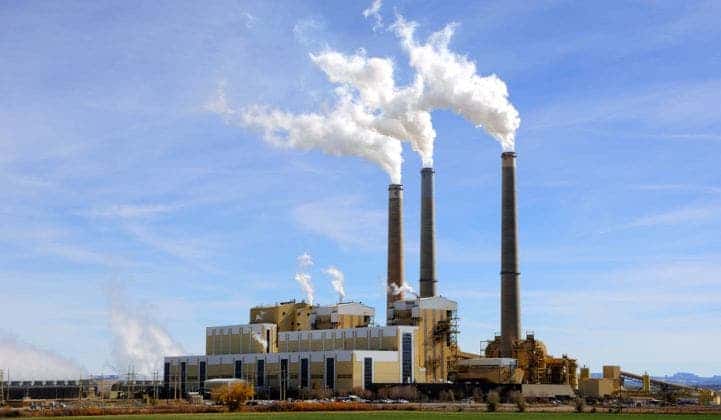Only days before countries gather in Spain for a new round of climate negotiations, a report by the United Nations showed that the world needs to increase its climate ambition five times in order to limit global warming to 1.5 degrees Celsius – in line with the Paris Agreement.

Countries have made a set of pledges to reduce their emissions since the agreement was signed in 2015. However, some projections show that even if all of them are met the temperature would reach 3.2 degrees Celsius by 2100, exceeding by large the global warming aimed at the Paris Agreement. To make matters even worse, few countries are staying true to their environmental pledges.
The United Nations Environment Program (UNEP) published its annual Emission Gap report, which looks at the difference between the amount of greenhouse gas emissions the world should be reducing and the actual direction the world is facing with the current promises made by countries.
“Our collective failure to act early and hard on climate change means we now must deliver deep cuts to emissions,” Inger Andersen, executive director of the U.N. Environment Program, said in a statement announcing the findings. “We need to catch up on the years in which we procrastinated.”
UNEP’s analysis shows emissions rose 1.5% per year in the last decade. Last year, the increase was of 55 gigatons of CO2 equivalent. The world has already experienced a global warming of 1 degree Celsius. That trend must reverse in the coming decade in order avoid a temperature increase of more than 1.5-degree Celsius, the report claims. This isn’t really happening, particularly in the richer parts of the world — where you’d hope that the change would come from.
The report especially looked at the 20 richest countries in the world, grouped under the G20 and responsible for 78% of the global emissions. Seven G20 members need to take more action to achieve their current pledges, including Australia, Brazil, Canada, Japan, the Republic of Korea, South Africa and the US.
India, Russia and Turkey will over-achieve their climate pledges by 15%, according to UNEP, but that’s largely due to un-ambitious targets in the first place. Meanwhile, for Argentina, Saudi Arabia and Indonesia, researchers claim they are uncertain regarding the three countries are in track to meet their pledges or not.
“We need quick wins to reduce emissions as much as possible in 2020, then stronger NDCs to kick-start the major transformations of economies and societies,” said Anderson. “We need to catch up on the years in which we procrastinated,” she added. “If we don’t do this, the 1.5C goal will be out of reach before 2030.”
The report also outlines a set of actions for different countries, with the main focus put on the energy system. For example, UNEP recommends Argentina to develop public transportation further in big cities, while China should ban all the new coal power plants it seeks to inaugurate in the near future. While China has taken some positive steps towards reducing its climate impact, it shows no true commitment towards a low-carbon economy. The country is opening up more coal plants — both within the country and outside of it.
This is the major problem in almost all the world: there is an over-investment in fossil fuels, the report claimed. The world is on track to produce 50% more carbon energy than it should if we want to limit global warming to 2 Celsius degrees. This gap in production is especially significant for coal, as countries plan to produce 150% more coal by 2030 than what would be consistent with the Paris Agreement goals.
In order to deal with the gap, countries should significantly reduce subsidies given to fossil fuel production and consumption, which represent billions of dollars per year. Countries need to extract and use less coal, switching to renewable energy.
“This is a new and stark reminder by the Unep that we cannot delay climate action any longer,” said Teresa Ribera, Spain’s minister for the ecological transition, host of the upcoming COP25 summit. “We need it at every level, by every national and subnational government, and by the rest of the economic and civil society actors.”






